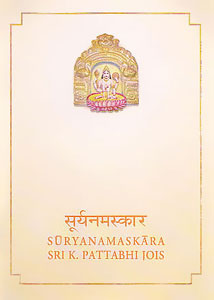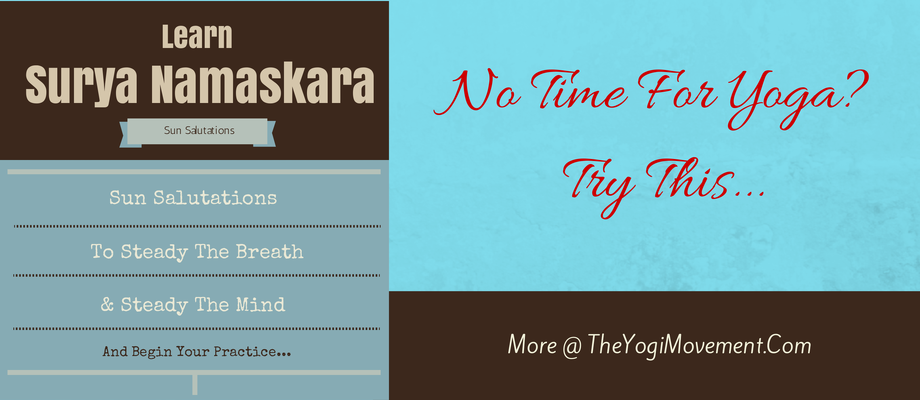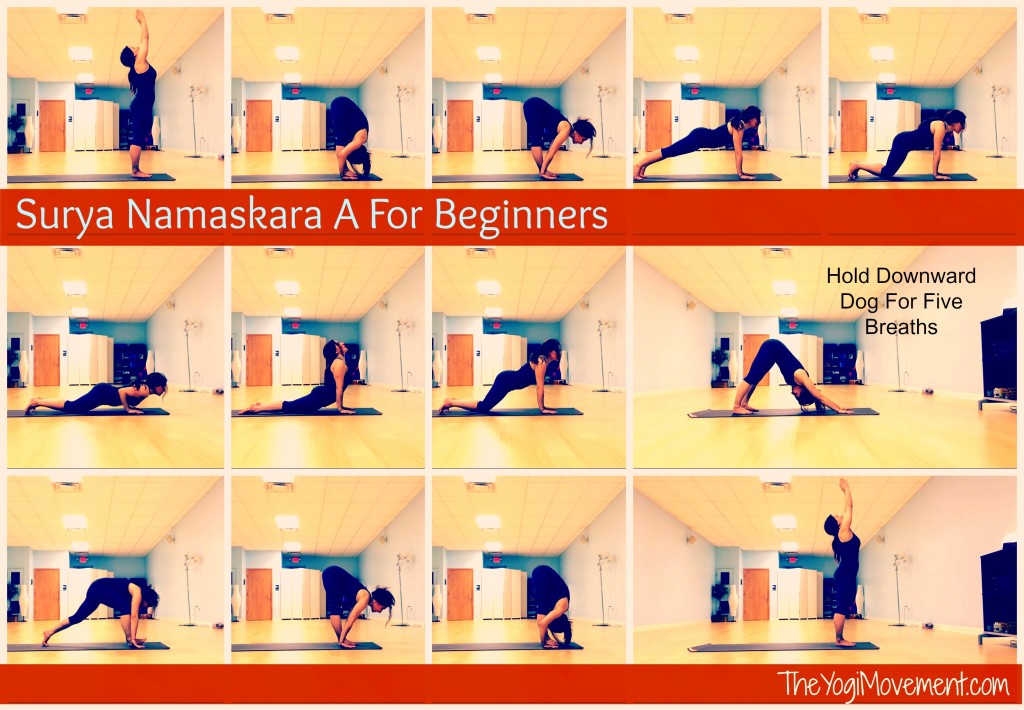Surya Namaskara or Sun Salutations are what build the foundation for the Ashtanga Yoga practice. These are a series of postures and movements that build strength and flexibility in the whole body. This flow of postures teaches the practitioner how to steady and expand the breath and lung capacity, keep a one pointed concentration, and sets the tone for the practice as a moving meditation.
It’s common in the beginning to not be able to do each movement for a full inhale or exhale, and as a result, the practitioner often becomes out of breath. This is normal and totally okay. It’s the consistent practice that will eventually lead to a steady and even breath, and then the Sun Salutation becomes delightful and enjoyable.
Below are my suggestions on how to work on Sun Salutations when you’re working to get to a point of steadiness and control:
First things first. Learn the sequence. There are 9 vinyasas, and the breath should always be in and out through the nose, and never held. In the beginning, don’t worry so much about staying in the vinyasa count. If you need to take an extra breath in plank or upward dog, then do it. First learn the sequence, then after you’ve been doing it for about two weeks, start making an effort to steady the breath, pay attention to the drishti, and then focus on the bandhas. Baby steps.
2. Don’t Rush and Enjoy The Process:
Sun Salutations speed up the heart rate and wake up parts of your body that aren’t used on a regular basis. Because of this, they can be tiring, so there is a tendency to rush the movement.
Pay attention to how you practice Sun Salutations because this is a reflection of your tendencies off the mat. Are you rushing through your Sun Salutations like you rush through life? Are you always trying to get somewhere rather than being in the moment?
Second, are you practicing with control and effort, or do you flop to your belly when come into Chautaranga? Let the breath take you through the movements, and stay in control of your body. Don’t move ahead of your breath, and don’t speed the breath up to move faster.
Just enjoy the feeling of your body waking up with the sun. This slow and steady breath should be the breath you strive for in your whole practice.
4. Think of Sun Salutations as a Spiritual Practice vs. a Warm Up:
Nothing warms the body like a Sun Salutation. Just remember that this is the toughest part of the practice for most people. If you can get through this, you can get through anything.
As your practice becomes more regular, it’s easy talk yourself into to cutting down the Sun Salutations because you feel warmed up. Even though the Sun Salutations will make you sweat, they are a spiritual practice, and not exercise. There is a difference, see below:
 Pattabhi Jois wrote a book called Surya Namasaka discussing how Sun Salutations are their own practice all together.
Pattabhi Jois wrote a book called Surya Namasaka discussing how Sun Salutations are their own practice all together.
“The practice of Surya Namaskara, or Sun Salutations, has come down to us from a long distant past, and is capable to rendering human life heavenly and blissful. By means of it, people can become joyful, experience happiness and contentment, and avoid succumbing to old age and death.
This tradition includes vinyasa, rechaka (inhale) and puraka (exhale), meditation, drishti, and the bandhas. And this alone is the method which should be followed when learning Surya Namaskara, as yogis declare from experience indeed, the Sun Salutations done without following the rules mentioned above are little more than exercise, and not true Surya Namaskara.”
5. If you’re short on practice time, always do Sun Salutations:
If you’re new to Ashtanga, or short on practice time, just start with Sun Salutations. Traditionally, one would do five Surya Namaskara A and five Surya Namaskara B. Then, move on to the closing three postures and Savasana. You can also click here for a post I wrote on how to modify your practice when life gets busy!
If you haven’t learned anything besides Sun Salutation A, then just do:
A. 10 Sun Salutation A:
You’ll see in the picture and video I mention dropping to your knees. Eventually you want to do the whole Sun Salutation with your knees off the ground. Feel free to drop to the knees if you’re feeling weak or exhausted at the beginning. As time goes on, challenge yourself and try to keep your knees off the ground on the first one. When that becomes manageable, then add on another one, etc.
B. 10 minutes of Savasana:
This is so important! All of the good energy you built up in the practice will circulate through your whole being and prepare you to take on the day.



[…] * Sun Salutations To Start […]